Simulation Standard
Silvaco面向半导体工艺和器件仿真工程师推出的技术刊物
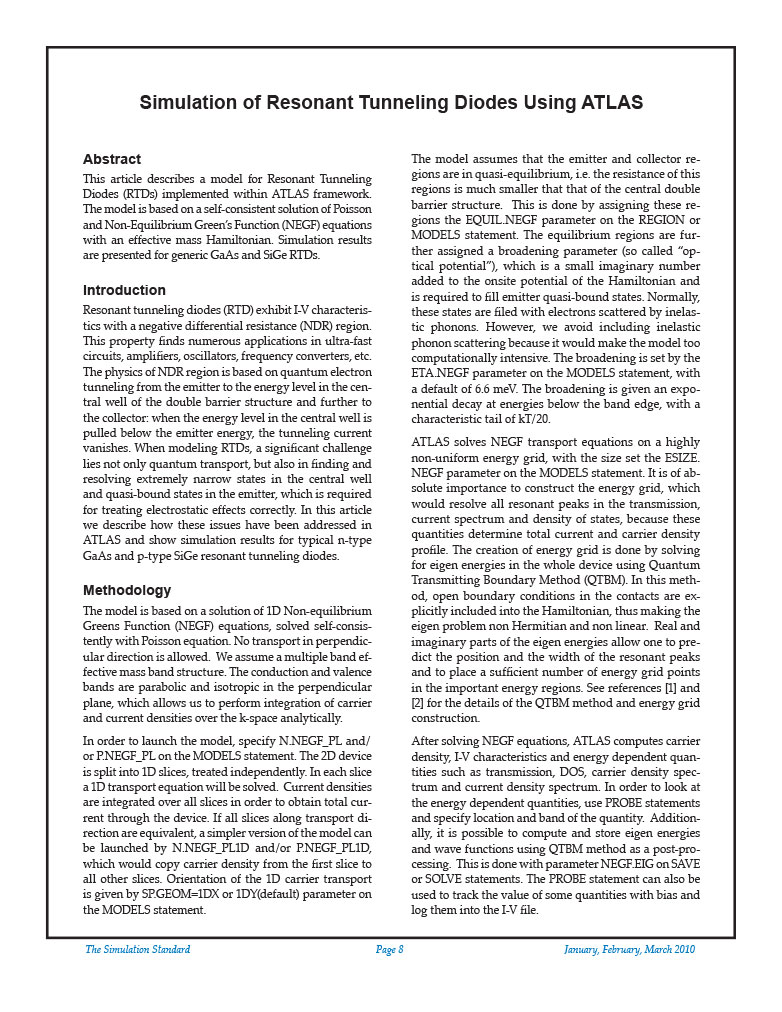
Simulation of Resonant Tunneling Diodes Using ATLAS
This article describes a model for Resonant Tunneling Diodes (RTDs) implemented within ATLAS framework. The model is based on a self-consistent solution of Poisson and Non-Equilibrium Green’s Function (NEGF) equations with an effective mass Hamiltonian. Simulation results are presented for generic GaAs and SiGe RTDs.
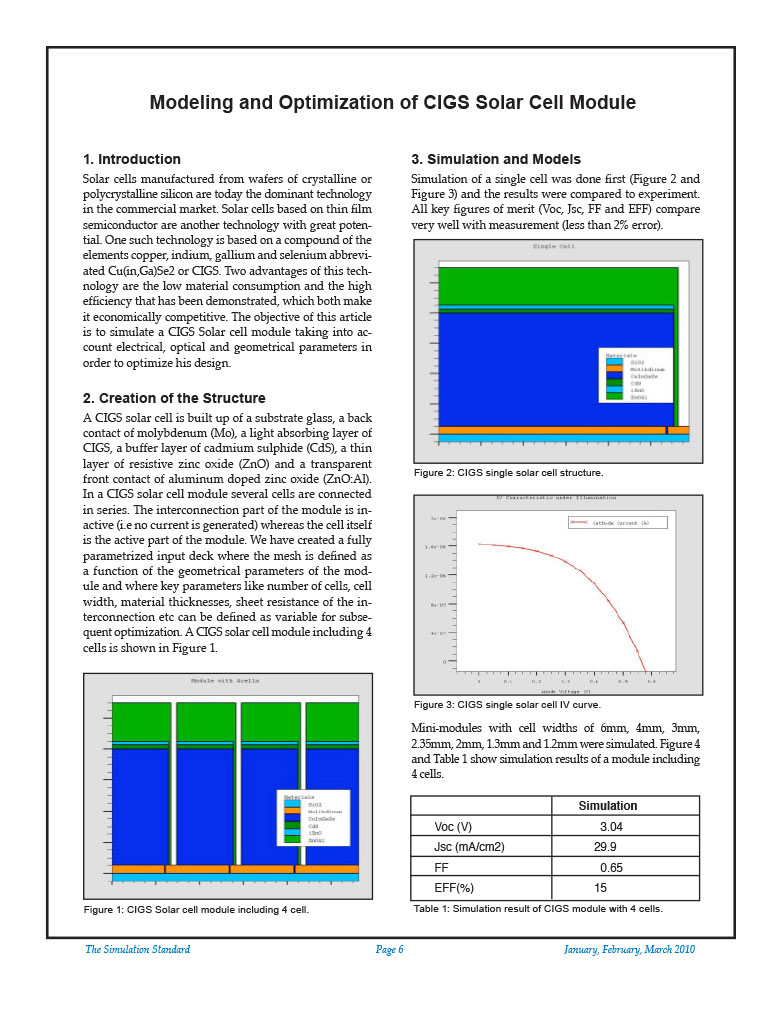
Modeling and Optimization of CIGS Solar Cell Module
Solar cells manufactured from wafers of crystalline or polycrystalline silicon are today the dominant technology in the commercial market. Solar cells based on thin film semiconductor are another technology with great potential. One such technology is based on a compound of the elements copper, indium, gallium and selenium abbreviated Cu(in,Ga)Se2 or CIGS. Two advantages of this technology are the low material consumption and the high efficiency that has been demonstrated, which both make it economically competitive. The objective of this article is to simulate a CIGS Solar cell module taking into account electrical, optical and geometrical parameters in order to optimize his design.
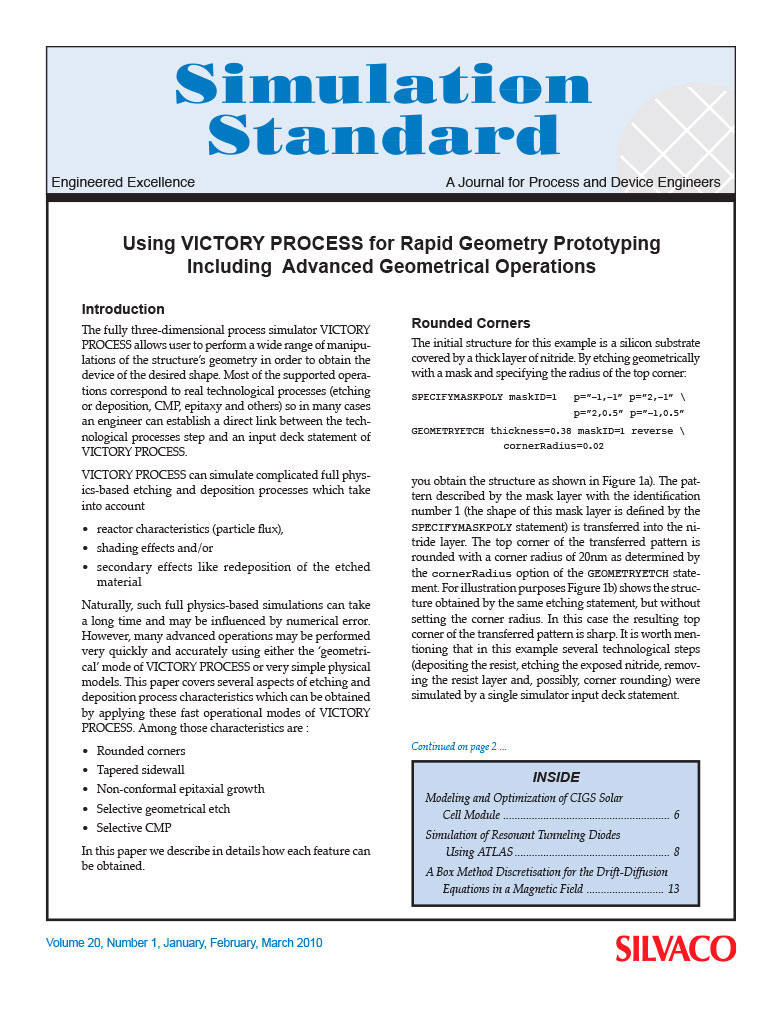
Using VICTORY PROCESS for Rapid Geometry Prototyping
The fully three-dimensional process simulator VICTORY PROCESS allows user to perform a wide range of manipulations of the structure’s geometry in order to obtain the device of the desired shape. Most of the supported operations correspond to real technological processes (etching or deposition, CMP, epitaxy and others) so in many cases an engineer can establish a direct link between the technological processes step and an input deck statement of VICTORY PROCESS.
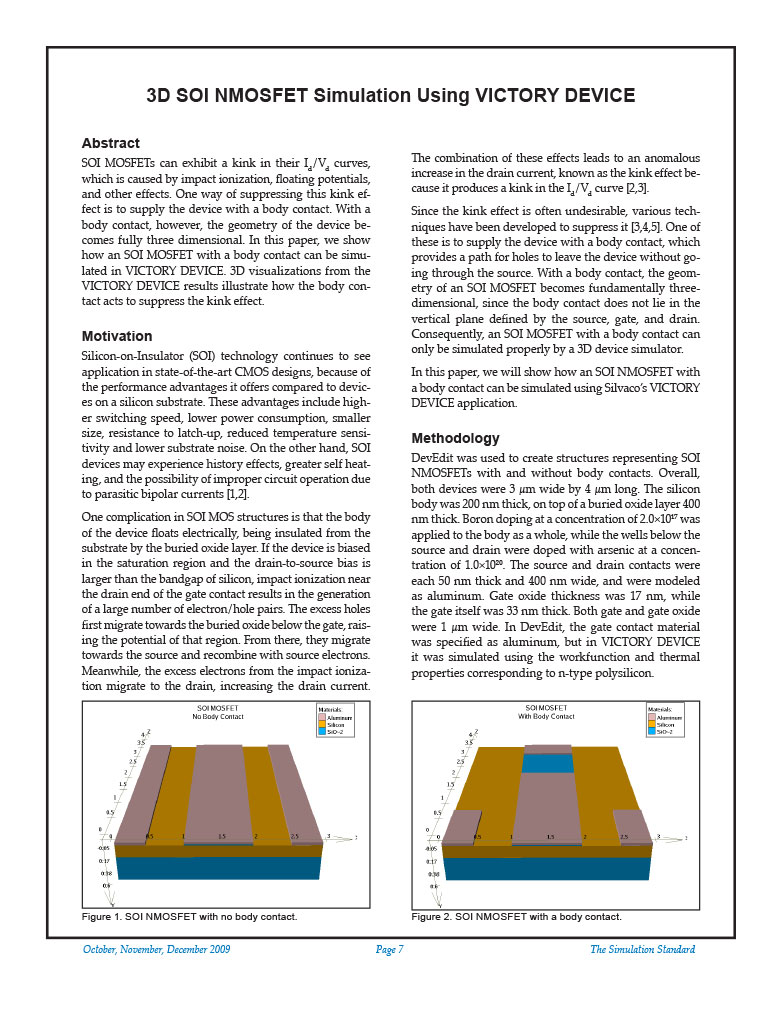
3D SOI NMOSFET Simulation Using VICTORY DEVICE
SOI MOSFETs can exhibit a kink in their Id/Vd curves, which is caused by impact ionization, floating potentials, and other effects. One way of suppressing this kink effect is to supply the device with a body contact. With a body contact, however, the geometry of the device becomes fully three dimensional. In this paper, we show how an SOI MOSFET with a body contact can be simulated in VICTORY DEVICE. 3D visualizations from the VICTORY DEVICE results illustrate how the body contact acts to suppress the kink effect.
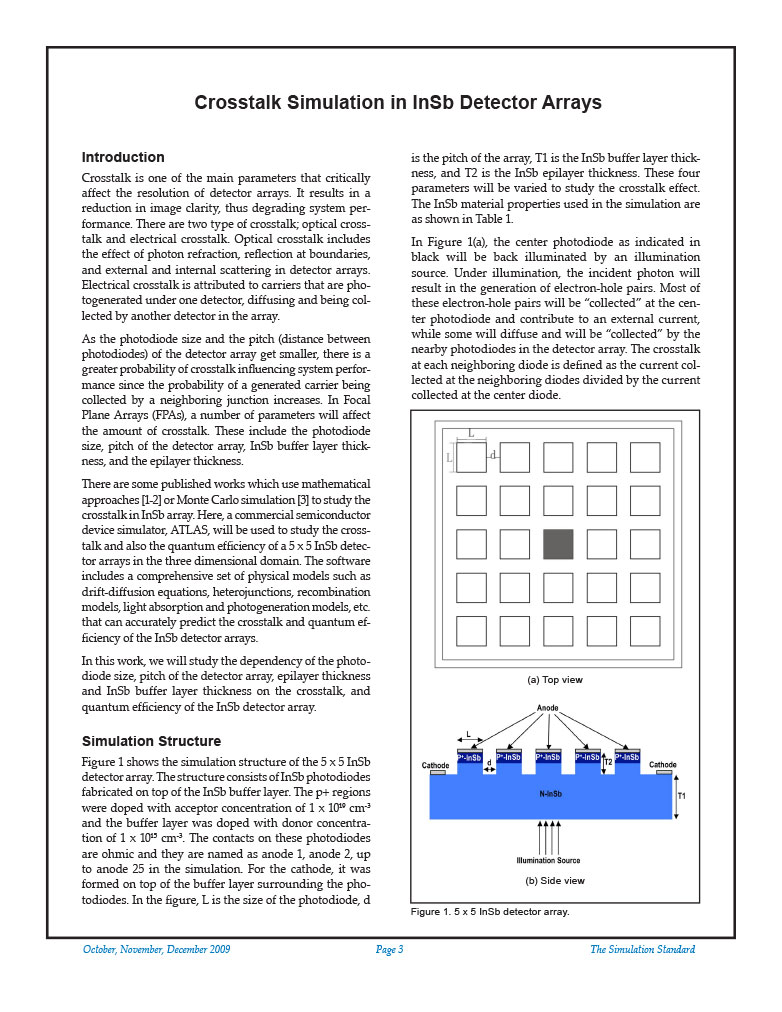
Crosstalk Simulation in InSb Detector Arrays
Crosstalk is one of the main parameters that critically affect the resolution of detector arrays. It results in a reduction in image clarity, thus degrading system performance. There are two type of crosstalk; optical crosstalk and electrical crosstalk. Optical crosstalk includes the effect of photon refraction, reflection at boundaries, and external and internal scattering in detector arrays. Electrical crosstalk is attributed to carriers that are photogenerated under one detector, diffusing and being collected by another detector in the array.
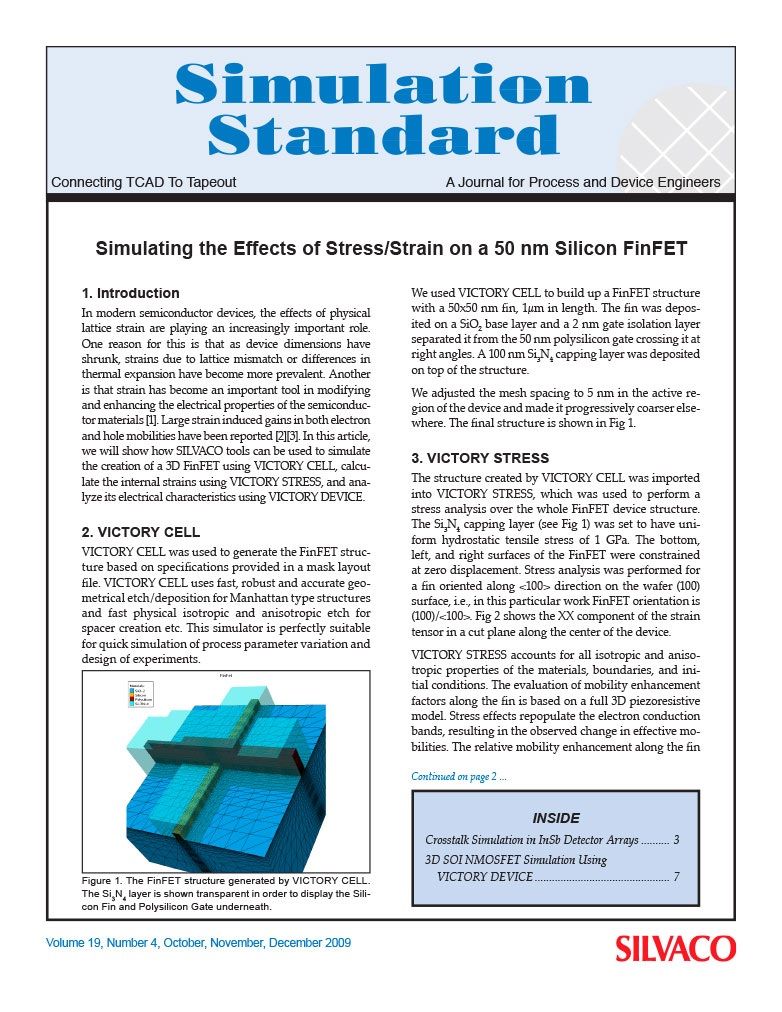
Simulating the Effects of Stress/Strain on a 50 nm Silicon FinFET
In modern semiconductor devices, the effects of physical lattice strain are playing an increasingly important role. One reason for this is that as device dimensions have shrunk, strains due to lattice mismatch or differences in thermal expansion have become more prevalent. Another is that strain has become an important tool in modifying and enhancing the electrical properties of the semiconductor materials [1]. Large strain induced gains in both electron and hole mobilities have been reported [2][3]. In this article, we will show how SILVACO tools can be used to simulate the creation of a 3D FinFET using VICTORY CELL, calculate the internal strains using VICTORY STRESS, and analyze its electrical characteristics using VICTORY DEVICE.

